On Sundays the people of Tarabuco, a little pueblo outside of Sucre, get together and host a market, for local people and tourists. I believe the market was originally just for other locals, but tourists eventually got word of the artisanal crafts sold there. So we come now, looking at the colorful aguayos (or awayus), the pirated movies, the stalls of flipflops, and the Yamparaz people moving around their village, interacting with tourists and neighbors.
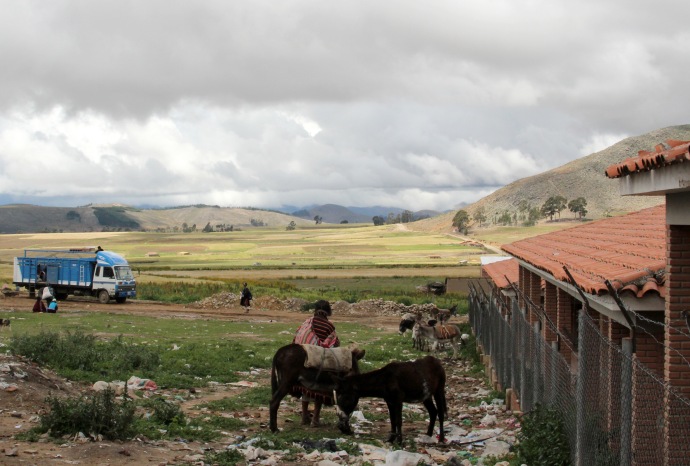 While the tourists come into town via minibuses from Sucre, the locals walk to town with their burros or pile into old trucks, if they do not live in Tarabuco already.
While the tourists come into town via minibuses from Sucre, the locals walk to town with their burros or pile into old trucks, if they do not live in Tarabuco already.
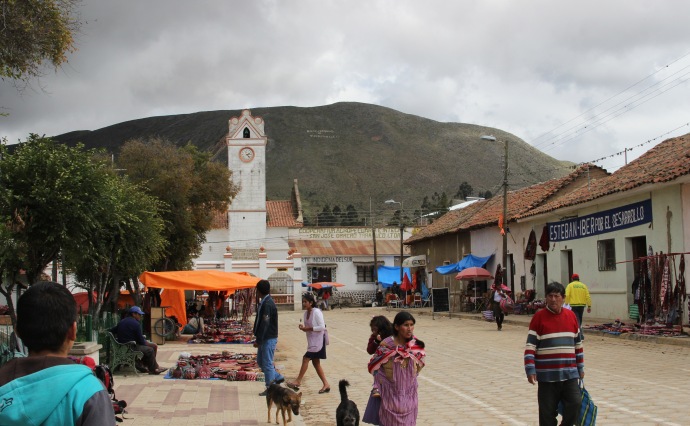 We arrived after an hour and a half trip from Sucre, packed in like Sardines with Bolivians. The bus dropped us off on the edge of town and we walked to the central plaza, the beginning of the open air market. The clock tower is the most recognizable structure in town. In the photo, an Aymaran/Yampara/Bolivian woman carries her child in her aguayo, which is a common sight throughout Bolivia.In fact, parenting (And therefore carrying babies) is communal. I read an interesting article by an Australian expat in Bolivia about the aguayos.
We arrived after an hour and a half trip from Sucre, packed in like Sardines with Bolivians. The bus dropped us off on the edge of town and we walked to the central plaza, the beginning of the open air market. The clock tower is the most recognizable structure in town. In the photo, an Aymaran/Yampara/Bolivian woman carries her child in her aguayo, which is a common sight throughout Bolivia.In fact, parenting (And therefore carrying babies) is communal. I read an interesting article by an Australian expat in Bolivia about the aguayos.
In the plaza is a nightmarish statue memorializing a battle between the indigenous people and the Spanish in 1814 and another in 1816. Seriously, the statues are twice the size of the average Bolivian at least, so the scary Andean warrior is around 10 feet tall.
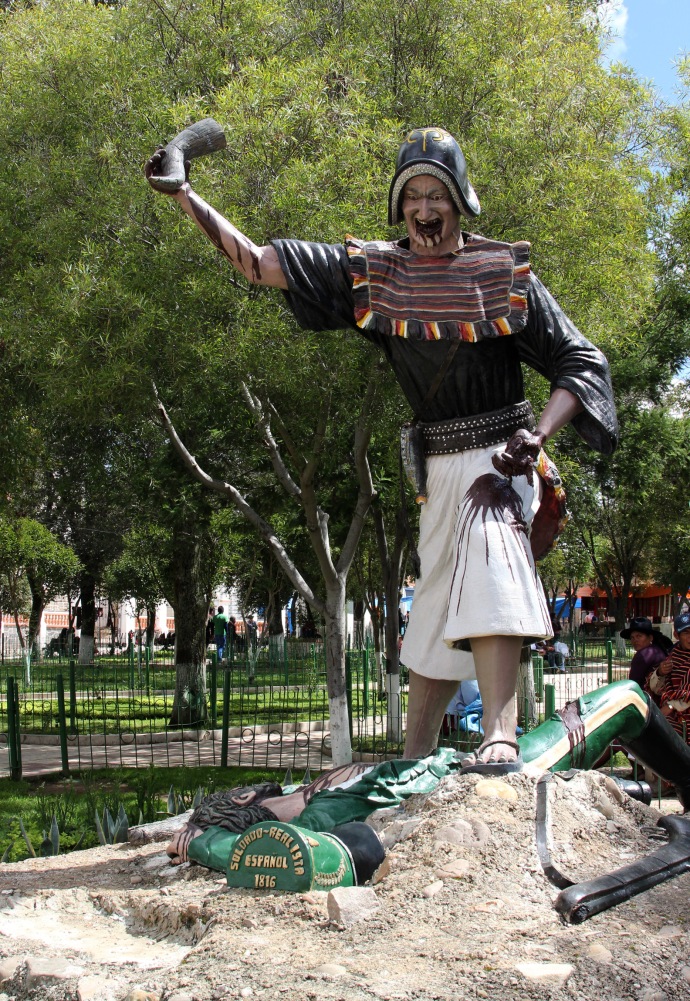 Seriously, the guy has ripped the soldier‘s heart out and is eating it. The plaque beside it tells the story of the battle. Basically, from what I can tell, the Spanish routed toe indigenous armies in 1814, a “humiliating” defeat that also killed their leader, a poet and high-ranking officer. Immediately after, the indigenous tribes reorganized into a different military design and used stronger, harsher techniques. In 1816 they had their revenge: the tribes won the “most bloody battle” in Bolivia against the “green Spaniards.” The memorial is to the “so-called Sunkoo Mikus,” who I suppose were a fierce tribe that was a part of the coalition. Their ferocity made a huge difference on the battle field, and after they ate the hearts of their dead enemies.
Seriously, the guy has ripped the soldier‘s heart out and is eating it. The plaque beside it tells the story of the battle. Basically, from what I can tell, the Spanish routed toe indigenous armies in 1814, a “humiliating” defeat that also killed their leader, a poet and high-ranking officer. Immediately after, the indigenous tribes reorganized into a different military design and used stronger, harsher techniques. In 1816 they had their revenge: the tribes won the “most bloody battle” in Bolivia against the “green Spaniards.” The memorial is to the “so-called Sunkoo Mikus,” who I suppose were a fierce tribe that was a part of the coalition. Their ferocity made a huge difference on the battle field, and after they ate the hearts of their dead enemies.
Cheery. So. Moving on.
We split a plate of food for just 10 bolivianos in a courtyard of a building in the marketplace. It was a leap of faith, because I wasn‘t entirely sure how well the chicken had been cooked. My fork was dirty too, but I suppose that‘s like in a developing region. Earlier in the morning we had attempted to drink milk we purchased as the Sucre central market. Overnight it had turned sour, so we were a bit wary. The chicken and rice concoction was pretty good and darn cheap.
I hadn‘t decided if I wanted to buy anything from Bolivia yet (we are limiting ourselves to one souvenir every other country), or if I wanted to wait until La Paz. But the aguayos were so beautiful with the bright, hot pinks, and the prices were so good, I went ahead and bargained.
We bought a medium aguayo for 48 bolivianos. I think we will use it as a blanket on long bus trips. It is handwoven, sturdy, and very durable. Bolivians use these for years to carry heavy loads on their backs. It was lovely, but not exactly what I had in mind for myself. On our way out of the market sprawl, I saw a beautiful hot pink with embroidered flowers and laced edging. It was exactly what I had in mind. The owner of the stall saw me looking, and gave me a price of 170 bolivianos. We didn‘t have that much money. In fact, we desperately needed an ATM.
He told me to name a price.
“70,” I told him. “I cannot go higher than 70. We don‘t have enough money to buy that and go home on the bus.”
“130,” he offered. He kept casting glances at another stall, where an older woman watched us. I realized he was a friend or family member that just happened to be manning the stall while the real owner was taking a break.
“I‘m sorry, but I can‘t do much than 70. We need a bus back home.”
“100. Can you do 100?”
I did feel sort of bad. I wasn‘t even sure I wanted to buy another item, let alone something that expensive. But I was in the midst of it, and the aguayo was so pretty.
“83, my final offer,” he told me.
“I can do 80. That leaves us 20 for the bus tickets,” I offered.
“Deal.”
So I walked away with the prettiest aguayo I saw for a really good price–probably local price, not gringo price. Now I just need to come up with a real use for it. I think the locals might laugh at me if I walked out of the hostel wearing it, carrying groceries or something on my back. So maybe I will use it to carry my own baby in, back in the States when I‘m a mother (Infants go in a sling on your front, toddler sit upright on your back). I will probably get some odd looks there too. For now, though, I am happy to use it as a blanket on my hostel bunkbed.
Logistics for getting to/from Tarabuco
- Take the city bus (line 7 from Mercado Central) to San Antonio. It is a small market area along the large road.
- Take a local microbus from the street corner to Tarabuco. One way is 10 bolivianos. They do not leave until they are full.
- Arrive at the edge of town, at the top of a hill. Walk down to the central plaza.
- To return, you will find the same microbuses one block from the plaza, outside a government and tourist building. There are public bathrooms nearby also. 10 bolivianos again, to the same street corner in Sucre.
- To get to the center of town, take any bus that is going to Mercado Central.
Augustino OldoiniWikipedia: Augustino Oldoini was an Italian Jesuit teacher, church historian and bibliographer. →

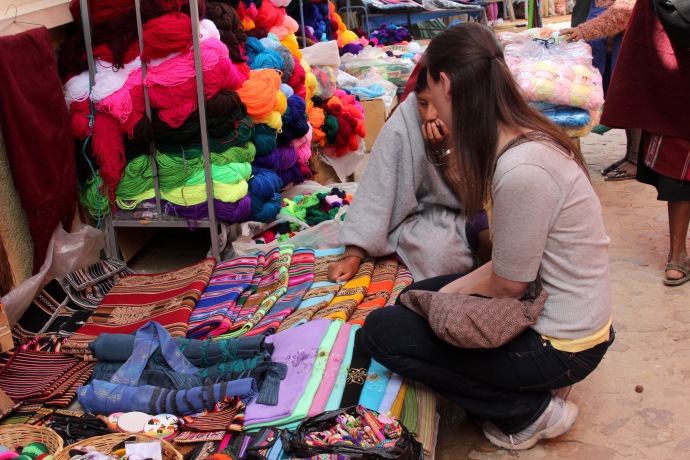
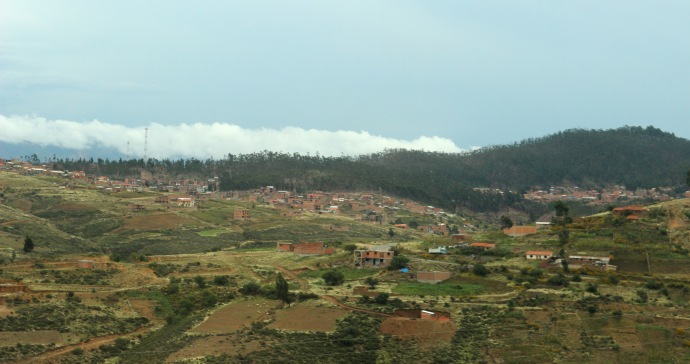
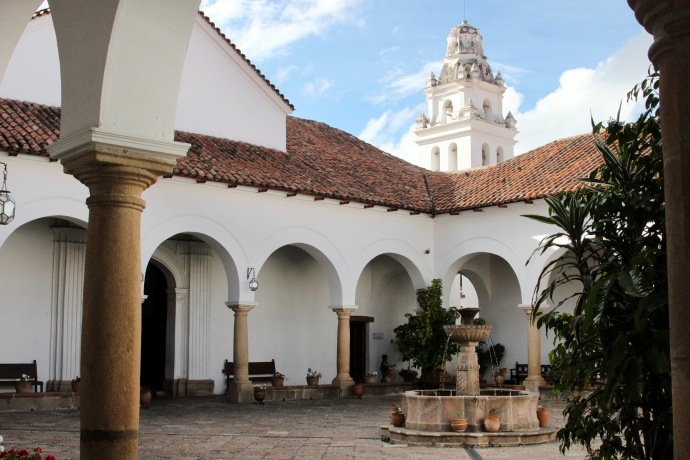
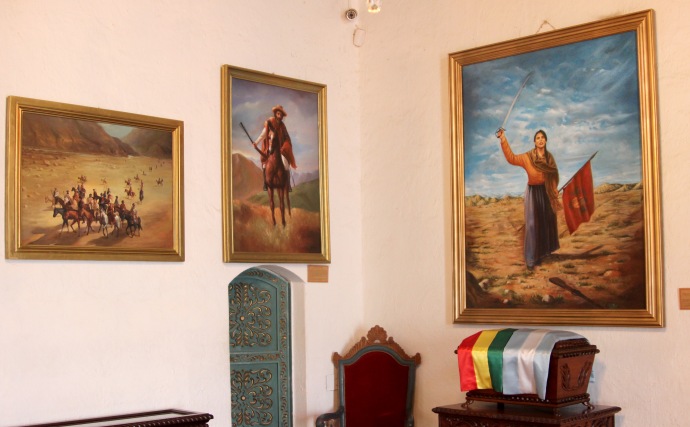
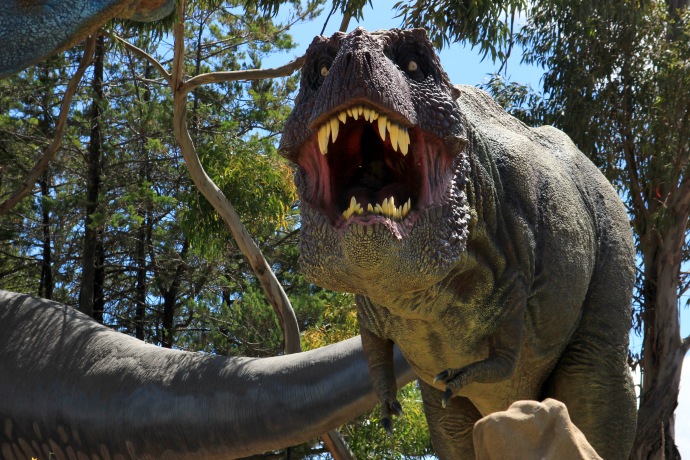
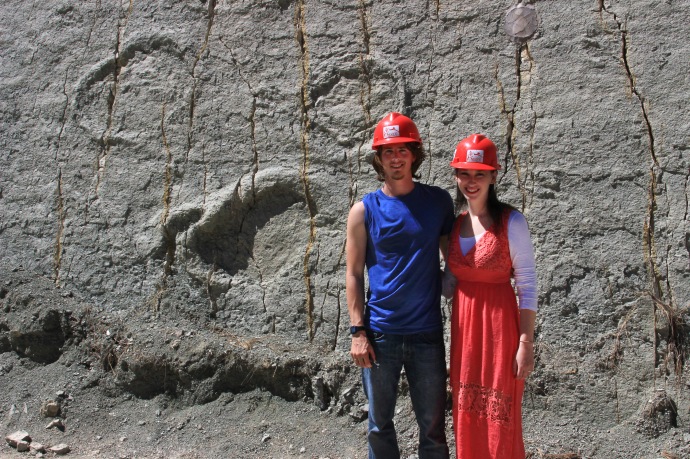
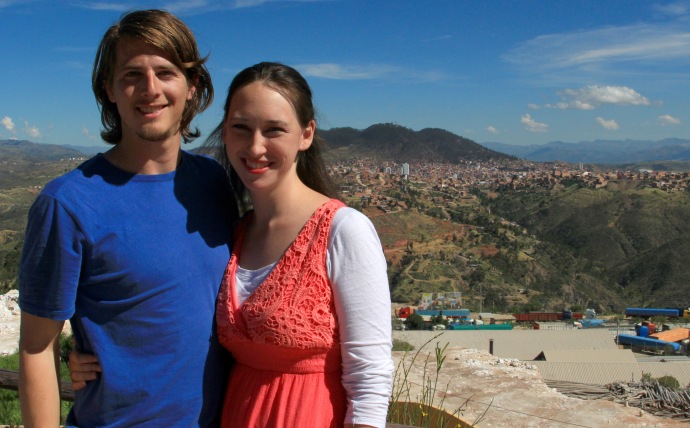
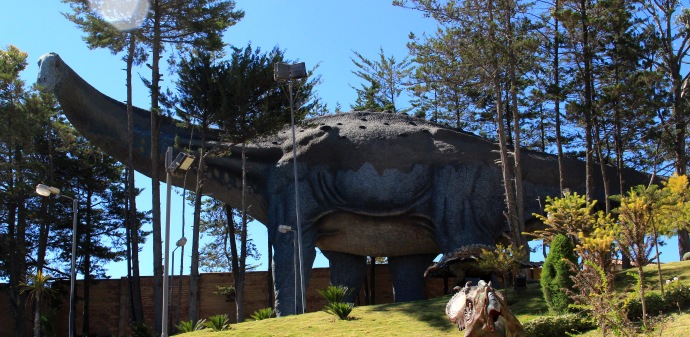
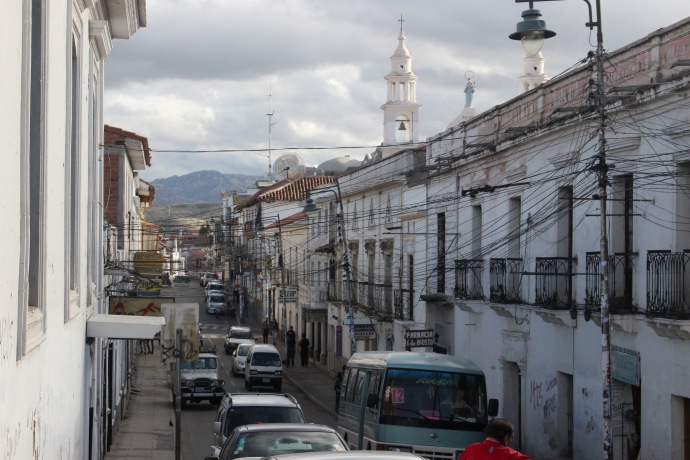
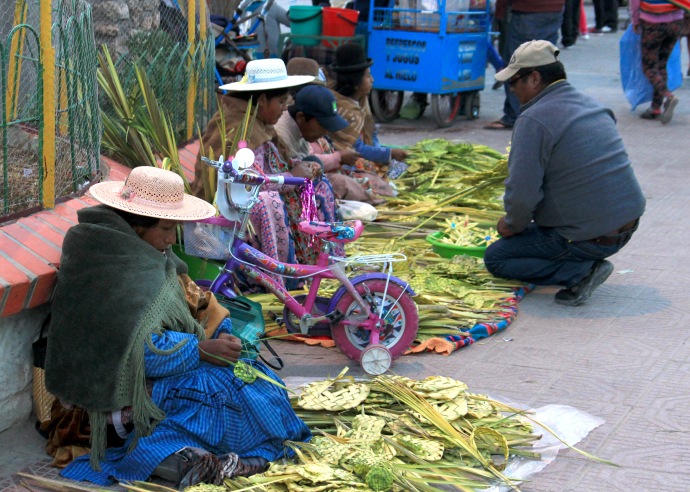
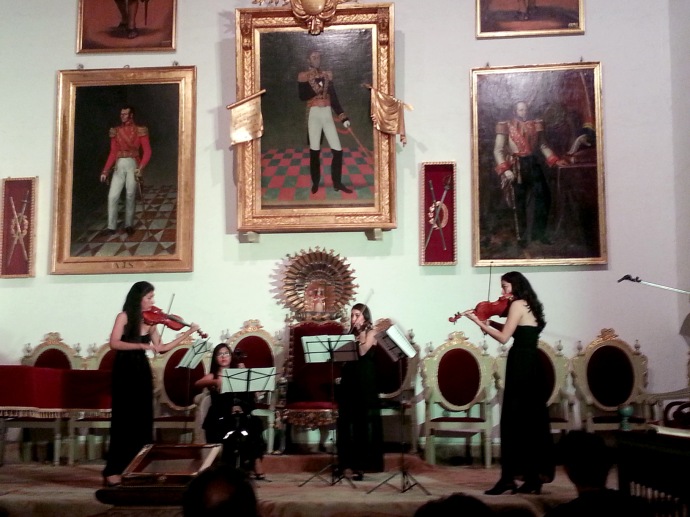
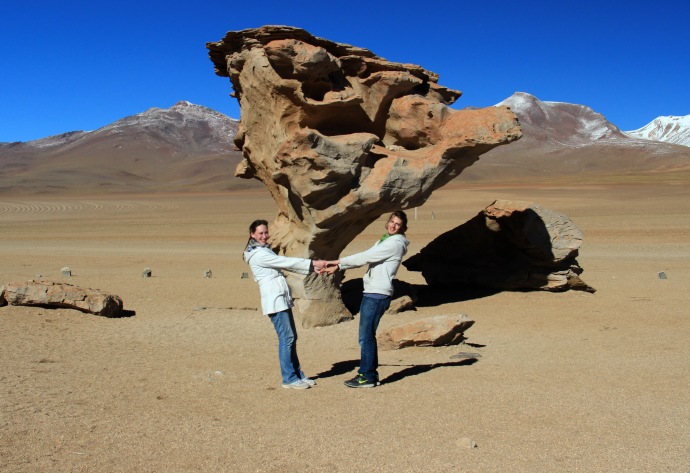
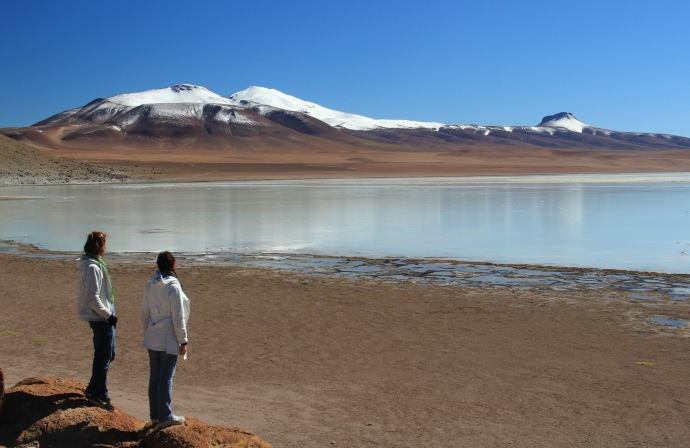
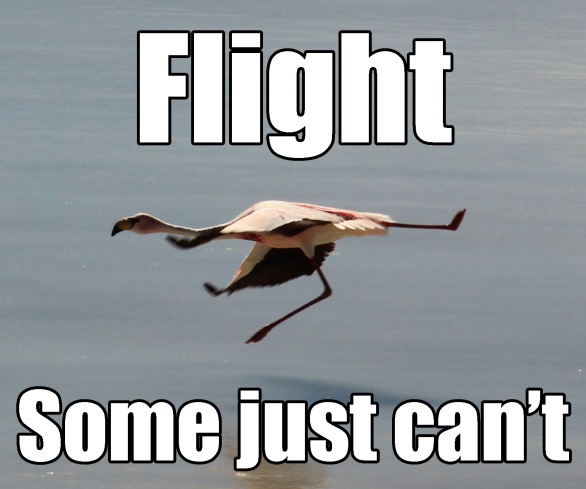
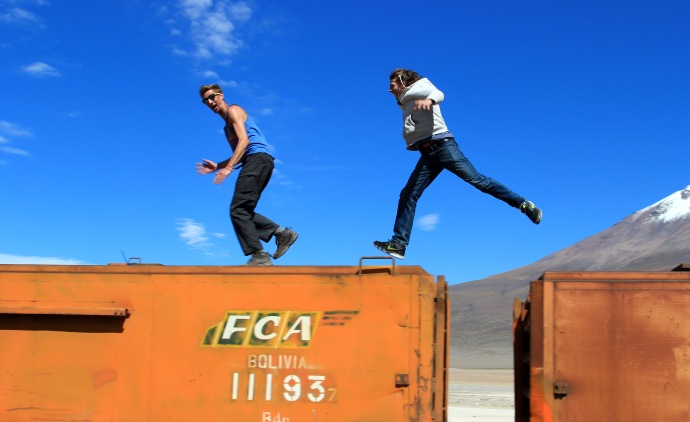
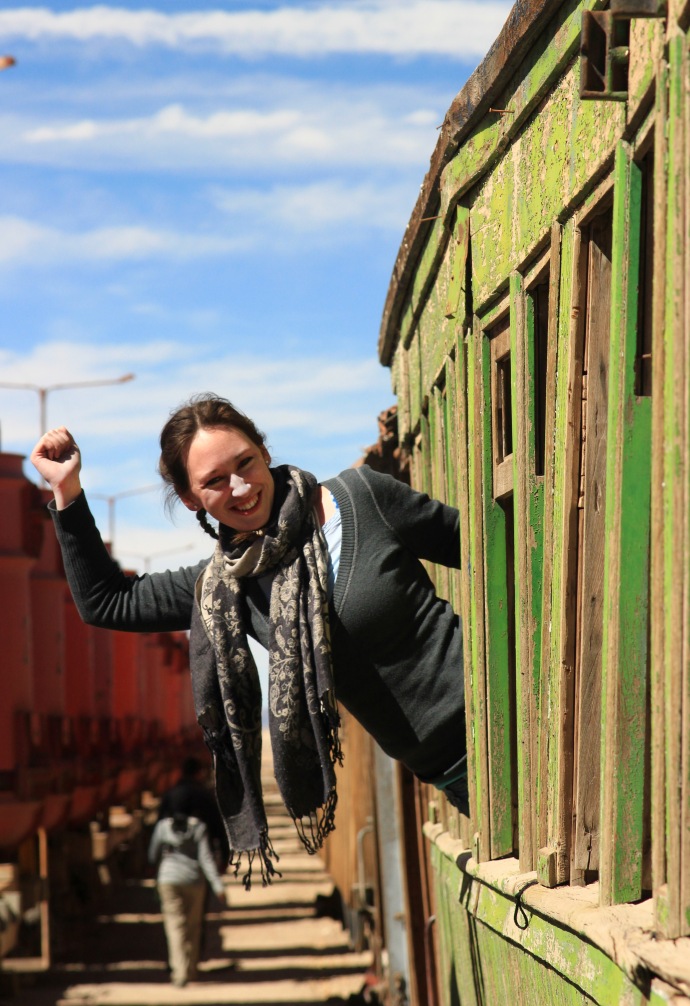
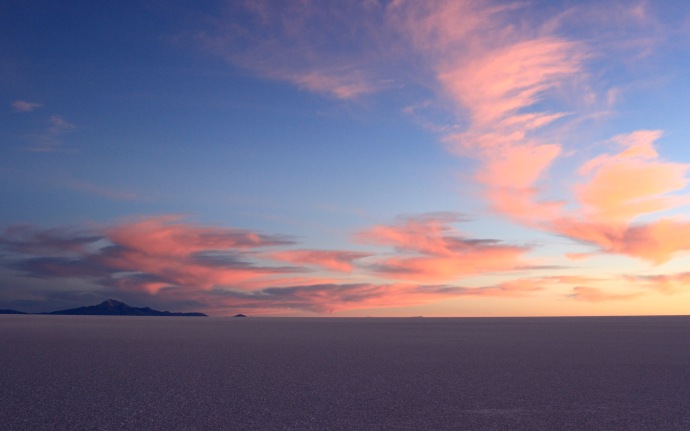
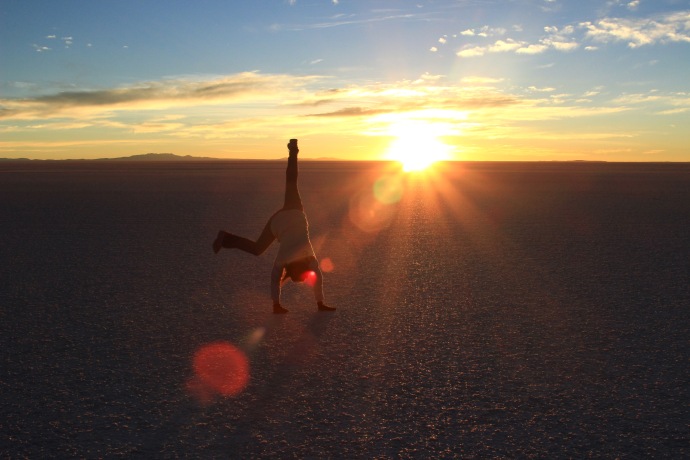
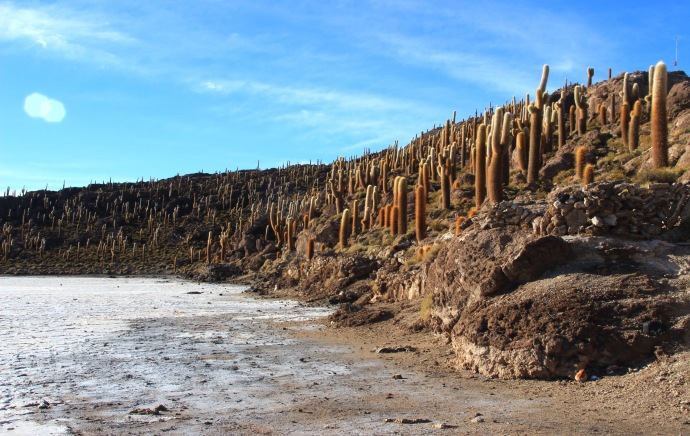
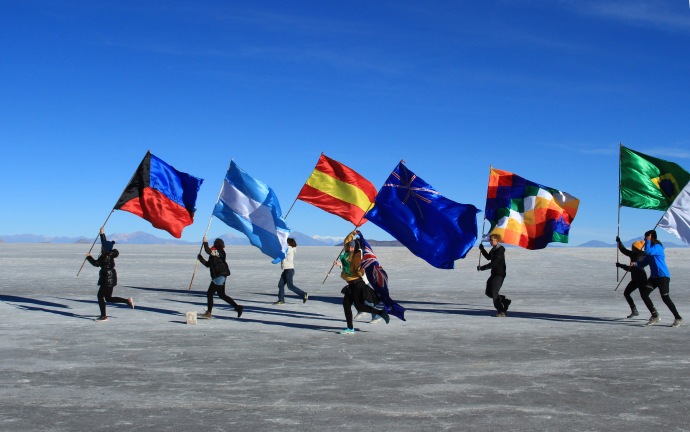
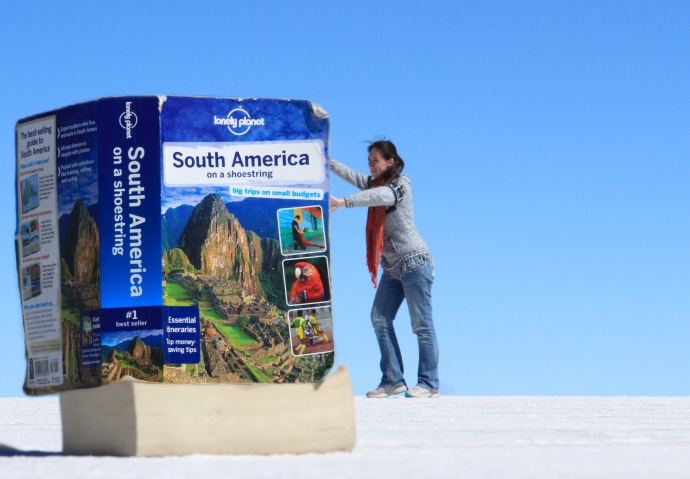
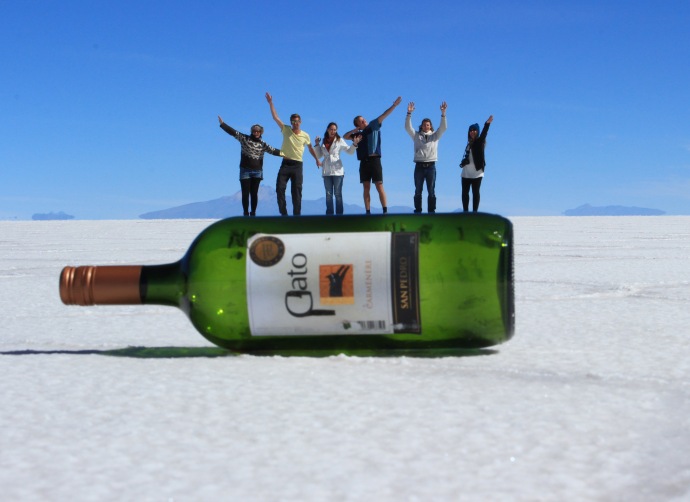
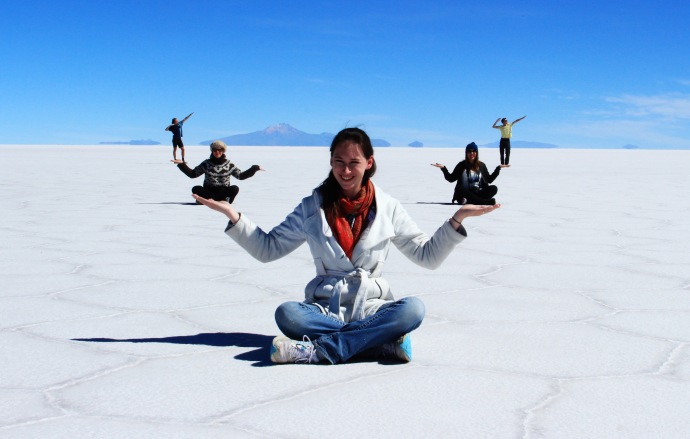
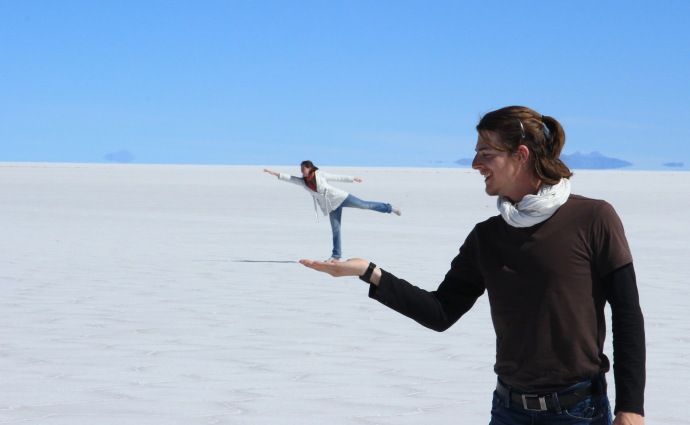
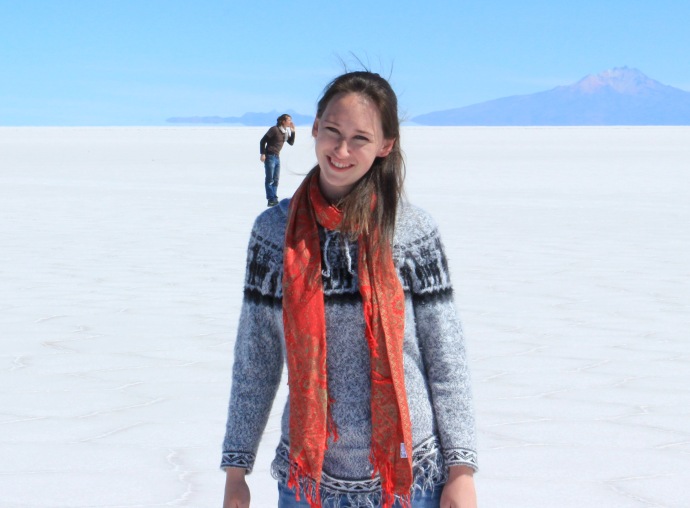
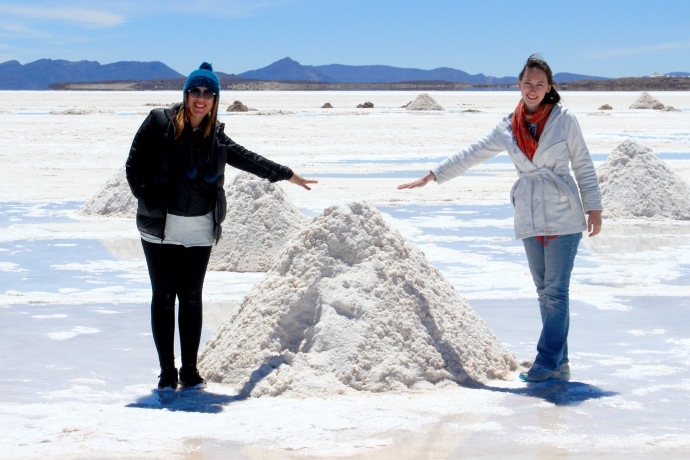
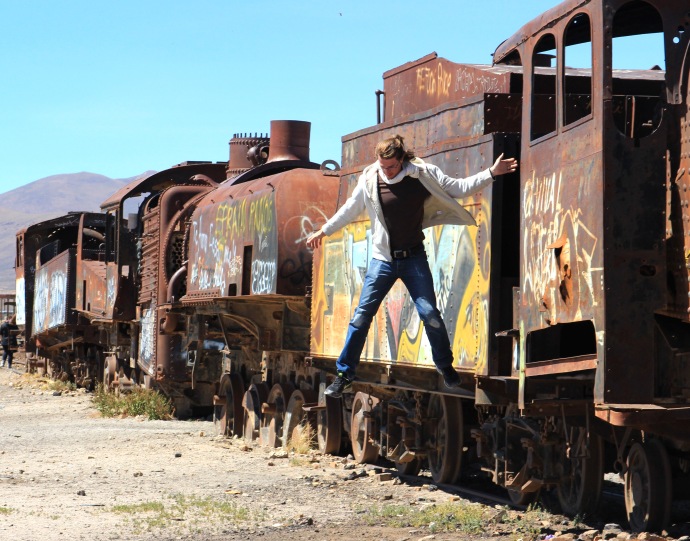
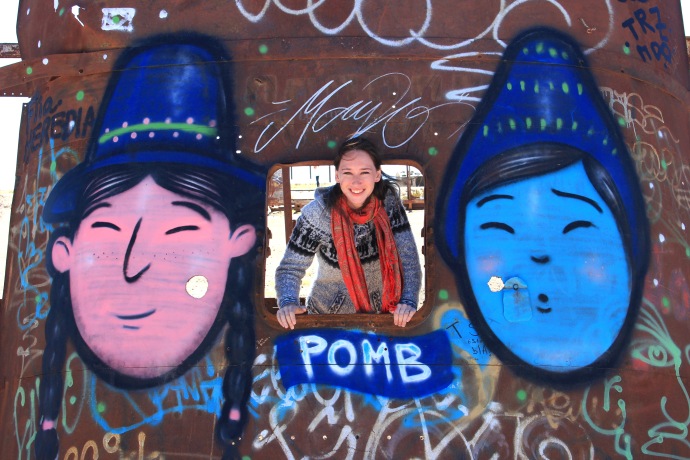
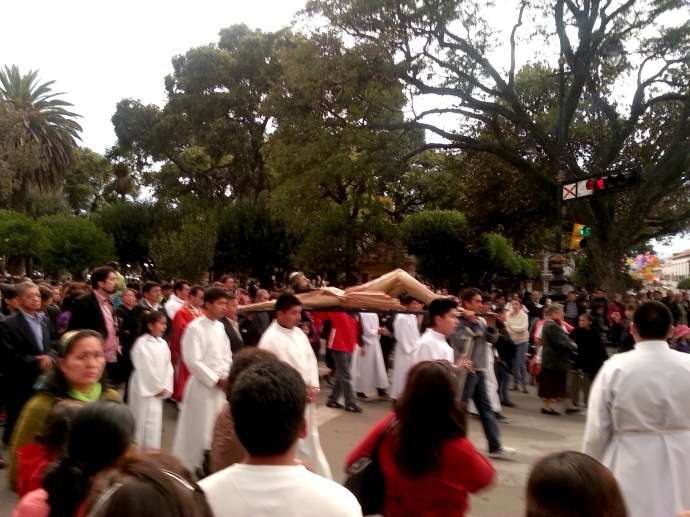
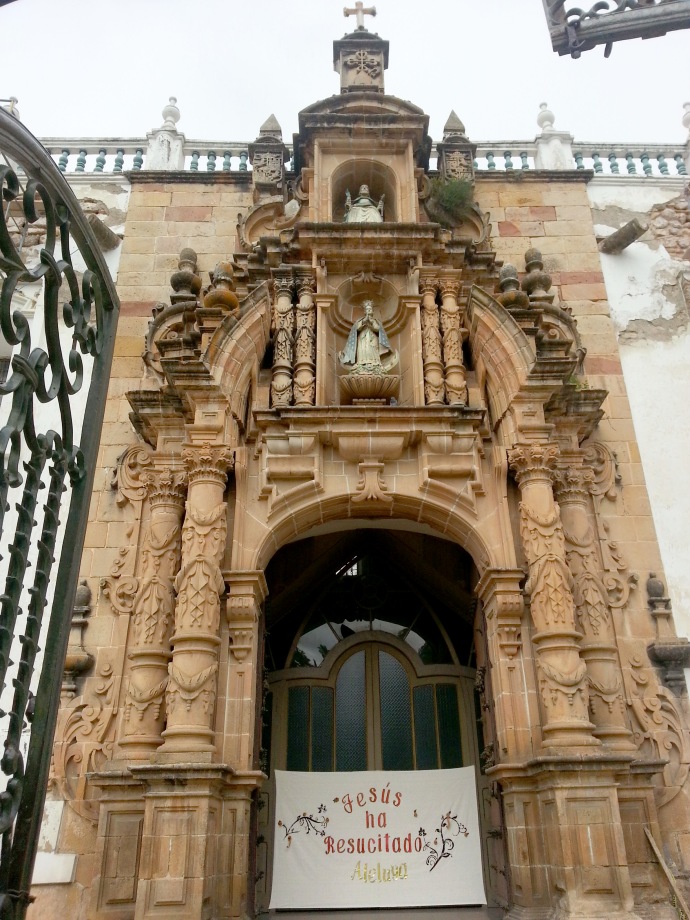
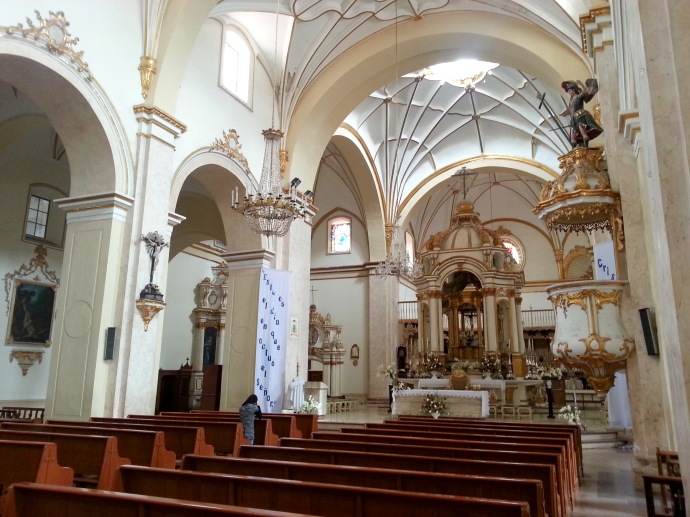
 Our tour bus picked us up at 7:30 am, outside our hostel, and drove us to the border crossing. Because it is winter, high in the mountains, there was snow on the road. We had to wait at the Chilean border for two and a half hours before we knew the pass to the Bolivian side of the border was open. We used that time to get to know our companions: two girls from Spain, one Manhattanite, and one Swede. We got along great and decided to pile into the same 4×4 jeep later that day. We finally got word the border was open around noon, which was great news. If we had to wait any longer, sites on the tour would have to be cut.
Our tour bus picked us up at 7:30 am, outside our hostel, and drove us to the border crossing. Because it is winter, high in the mountains, there was snow on the road. We had to wait at the Chilean border for two and a half hours before we knew the pass to the Bolivian side of the border was open. We used that time to get to know our companions: two girls from Spain, one Manhattanite, and one Swede. We got along great and decided to pile into the same 4×4 jeep later that day. We finally got word the border was open around noon, which was great news. If we had to wait any longer, sites on the tour would have to be cut.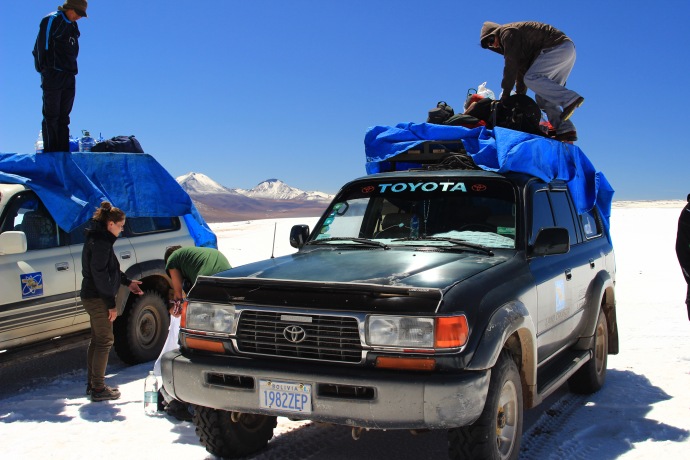
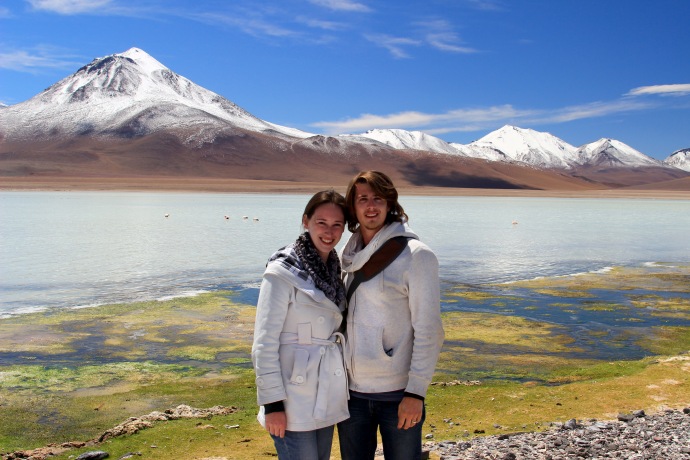
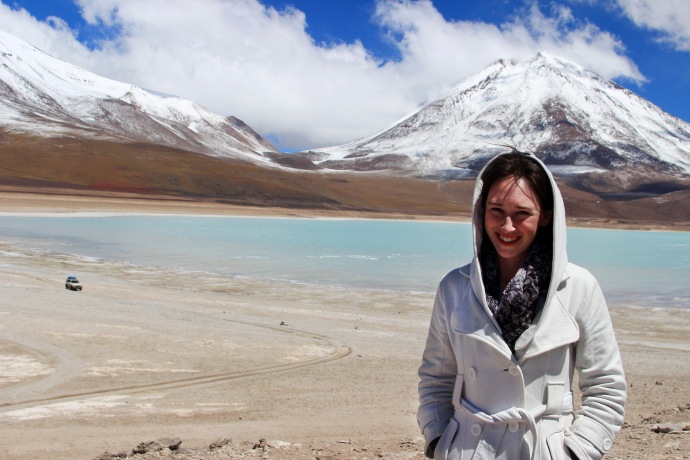
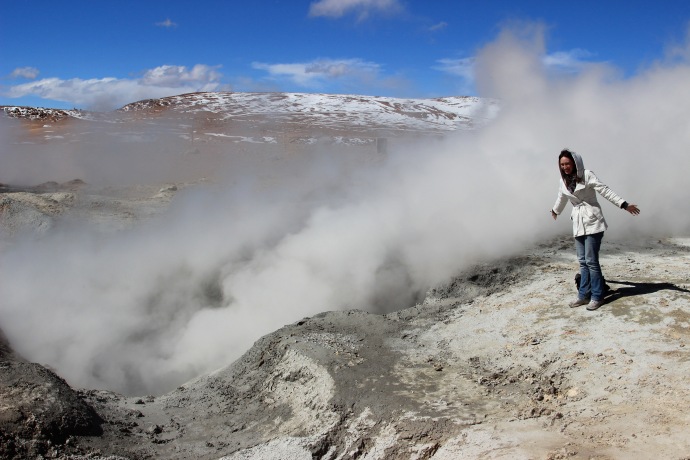
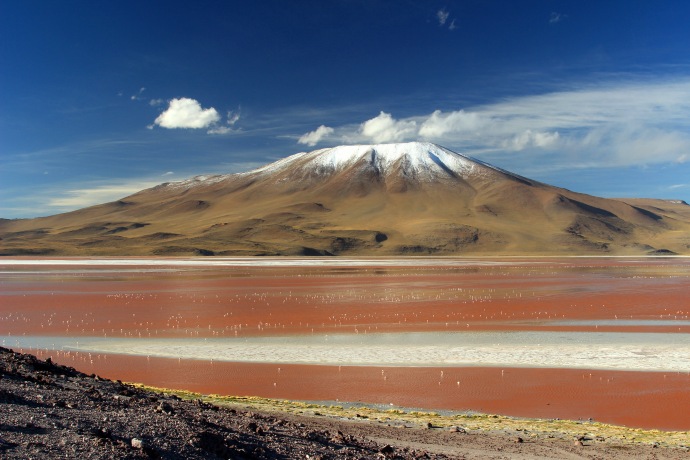
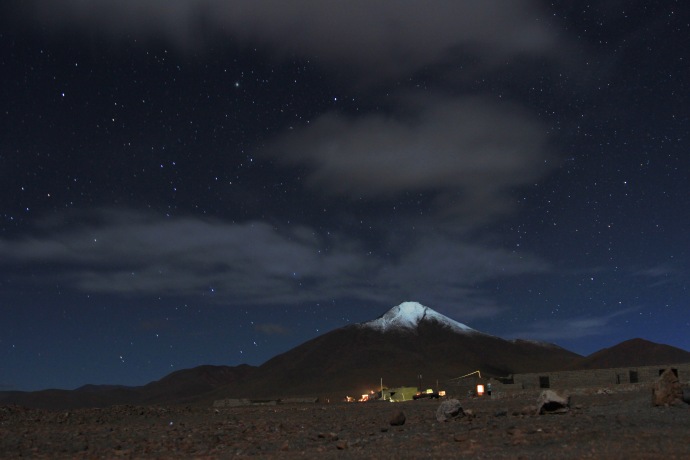
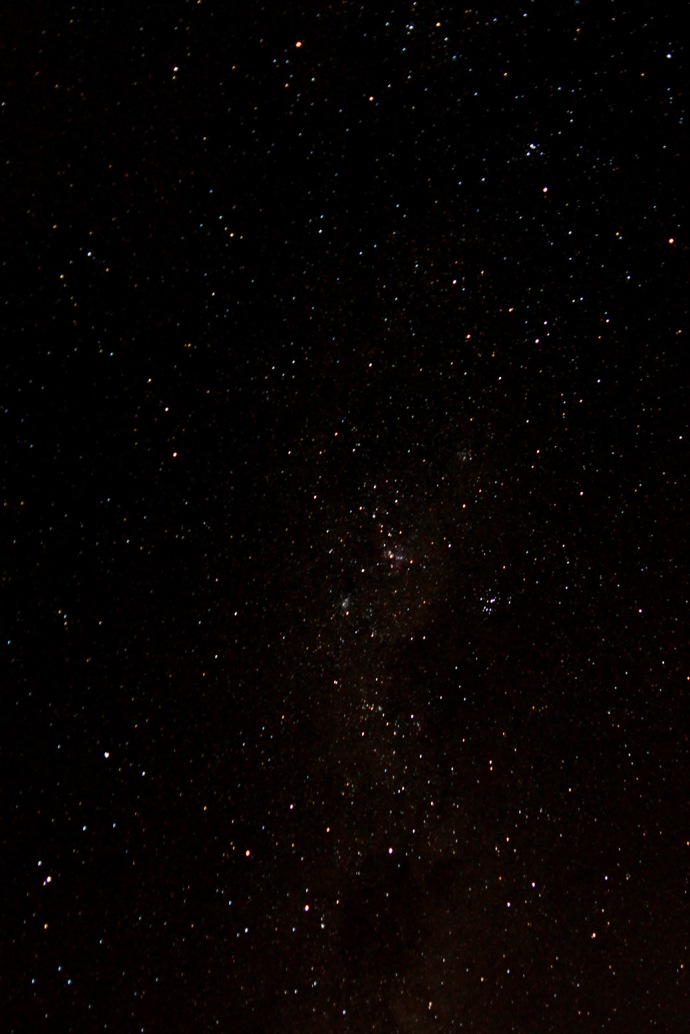
Recent Comments